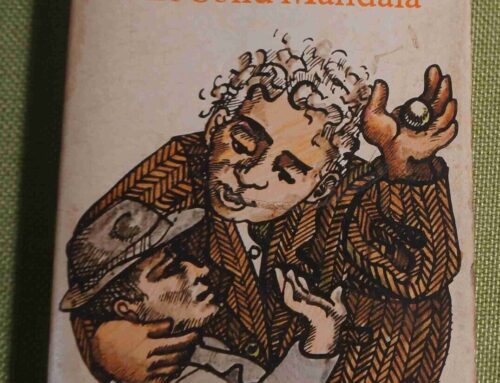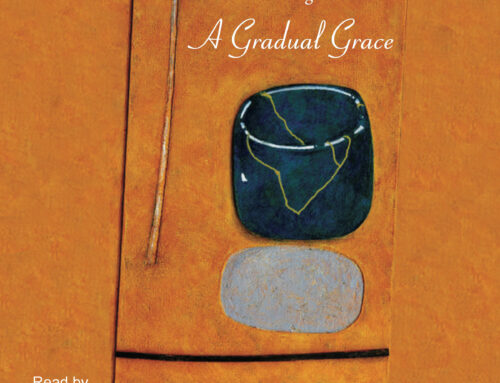Nathaniel Hawthorne’s 1850 novel (or romance, as he called it), The Scarlet Letter, has become a classic of American literature. It was on my reading list in my Honours year in English Literature, and though I read it at the time, I scarcely remembered it. Yet, having come to live the role of ‘the scarlet woman’ in my own life, I now have a special affinity with it, as I do with Tolstoy’s masterpiece, Anna Karenina (which I will re-read and review soon).
This slim story has a 30-page introduction, which I skimmed through after I read the tale. The essence of this wordy preface is that Hawthorne claims to have found a package in the dusty archives of a Custom-House when he was a clerk there; the package contained a rag of scarlet cloth, strangely and skillfully embroidered in gold thread, depicting the capital letter A, with each limb ‘precisely three inches and a quarter in length’. Fascinated by the letter, he placed it on his breast, and
experienced a sensation not altogether physical, yet almost so, as of burning heat, and as if the letter were not of red cloth but, red-hot iron. I shuddered and involuntarily let it fall the floor.
With it was a roll of dingy paper, containing ‘a reasonably complete explanation of the whole affair.’
This literary device gives the tale a frame of historical veracity, but it is not a work of historical fiction; it is an allegory with a deep and complex moral structure. This morality is framed by Hawthorne’s own conditioning in Puritan beliefs. Yet the unravelling of the story challenges those same beliefs and offers a glimpse of a more evolved morality, where truth is the imperative, not outward appearance and conformity to convention; and where Pearl, the fruit of adultery, escapes from the narrow Puritan world and, it is suggested, claims a type of womanhood that is not confined and constricted by the rigid codes of patriarchal religion. In the climactic scene at the scaffold, Arthur Dimmesdale, the revered clergyman and the former lover of Hester and father of Pearl, declares his sin (which had been kept secret for more than seven years) and reveals, imprinted on his breast, the same scarlet letter Hester wears embroidered on her bodice. He has been consumed by guilt, remorse and fear of exposure since Hester was imprisoned and punished, and has kept his secret at his own great cost. He has also, since Hester’s emergence from prison with three-month-old baby Pearl, been tormented by the man whom Hester had been married to before coming to the New World. This man, Roger Chillingworth, is a scholar and a healer, but uses his art to seek secret revenge on the adulterer. He masquerades as his intimate friend and physician, while secretly working towards the cleric’s destruction.
Arthur redeems himself from his torment, not by escaping back to the Old World with Hester and Pearl, as he had agreed to do at a meeting a few days before in the forest, but by declaring his sin and revealing his secret branding with the letter A to the gathered crowd. He does this on the very same scaffold where Hester had stood with her little baby after she had been released from prison. Her punishment was in part because she had refused to reveal her lover’s identity. But she had kept another secret — the identity of the dark, deformed healer-cum-tormenter who swore revenge on Hester’s lover.
Arthur’s penultimate dying act is to invite Pearl to kiss him.
Pearl kissed his lips. A spell was broken. The great scene of grief, in which the wild infant bore a part, had developed all her sympathies; and as her tears fell upon her father’s cheek, they were the pledge that she would grow up amid human joy and sorrow, nor forever do battle with the world, but be a woman in it.
Till this moment, Pearl had been a wild child, capricious, wilful, a nature spirit, thought by some to be a demon child. She is a brilliant creation, and enlivens every scene she is in with her vivacity, penetrating and precocious insights, and fierce truthtelling. She may be the very embodiment of the scarlet letter her mother wears on her breast. Yet in her, it is not a brand, it is an expression of the truth of her origin. In an earlier scene in the forest, when Hester has an encounter with Arthur Dimmesdale, Pearl is playing on the other side of the brook. Arthur is afraid she will reject him, and asks Hester if the child will love him.
Hester smiled, and called again to Pearl, who was visible, at some distance, as the minister had described her, like a bright-apparelled vision in a sunbeam, which fell down upon her through an arch of boughs. The ray quivered to and fro, making her figure dim and distant — now like a real child, now like a child’s spirit — as the splendour went and came again. She heard her mother’s voice, and approached slowly through the forest.
I’ve given a rather back-to-front account of the story, and have said little about the structure and the literary devices. Briefly, it doesn’t follow the conventional story arc that a nineteenth-century novel would. It begins with the release of Hester and her baby from prison, and does not give us the backstory of her marriage when young to an elderly scholar and how she has come to be branded as an adulteress. Her past life is glimpsed in her reflections as she stands on the scaffold, subjected to the sombre gaze of the assembled crowd. “… the scaffold of the pillory was a point of view that revealed to Hester Prynne the entire track along which she had been treading, since her happy infancy.” She sees her native village, her home, her parents, and the deformed shape of the man who became her husband. From this scene onwards, the story unfolds to show us her severe, constricted life as a branded woman, earning sustenance by her skill in needlework and embroidery, and gradually becoming respected for her selfless devotion to those who are ill in mind and body and in need of help. In other words, she does her penance. Towards the end, in the scene in the forest, she grasps at the possibility of another identity — not a martyred one, but one of love, truth, and freedom, casting off the scarlet stigma, the shame and anguish, claiming happiness.
It is not to be; it is not Hester who lacks the will to make this happen, but her lover, who is unable to escape the guilt and remorse and the sinister hold that Chillingworth has on him.
What is to be said, in the end? This intense, passionate tale, in its tragic unfolding, stands out for me in several ways: the lyrical passages; the deeply faceted symbolism of the scarlet letter, and of light and dark in the interplay between vivid nature and the dismal severity of the Puritanic code of law, physically embodied in sombre clothing and grim public buildings; the compassionate portrayal of the central characters, Hester, Dimmesdale, and Pearl; the dancing vividness of the child Pearl; and finally, the subtle and nuanced portrayal of the old morality and the poetic evocation of a new morality that emerges through Hester’s sacrifice and the freeing of the child Pearl from the New World.




